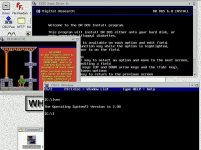OldTimeCoder
New Member
I started with 1.1, then 2.11 and used that for the longest time although I did purchase 3.1 and 5.1 but did not really upgrade until 6.22 which I still use today. Everything below 6.22 has lousy memory usage and for the most part way too bulky to use on a regular basis. I was a programmer and as such 2.11 was small, quick, and did its job well. It was bad enough to compile and link a decent program back in the day. And so with time at a premium you went with what was the quickest and that was 2.11. When I upgraded to a 486 with 3.5" floppies I had to upgrade and on that machine used 3.32 until 6.22 came out.
The best thing about 6.22 is that it can access huge amounts of memory, well over the 64 meg limit with the right software.
The best thing about 6.22 is that it can access huge amounts of memory, well over the 64 meg limit with the right software.

